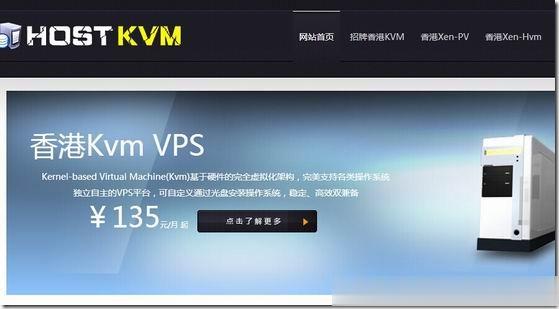asei450
i450 时间:2021-02-28 阅读:()
EffectofShotPeeningParametersonthePropertiesofSurfaceLayersinAlSl4140inDifferentHeatTreatmentConditionsbyH.
Hozapfel,A.
Wick,and0.
VijhringerAbstractTheeffectsofthetechnicalimportantshotpeeningpara-meterspeeningpressure,massflow,hardnessandsizeoftheshotparticlesonthesurfacelayerpropertiesweresystemat~callystudied.
SamplesofthedifferentlyheattreatedsteelAISI4140(GermanGrade42CrMo4)withahardnessbetweenHV230andHV660wereshotpeened.
ThesurfacelayerswerecharacterizedbymeasuringtheresidualstressesandthehalfwidthvaluesofinterferencelinesusingX-raydiffractionandbydeterminingthesurfaceroughness.
Withincreasingworkpiecehardnesscharac-teristicmaximaofthecompressiveresidualstressesbeneaththesurfaceareobserved.
Anincreasingpeeningintensitycausesadeeperpenetrationofthecompressiveresidualstresses.
Duringshotpeeningthehalfvaluesnearthesurfaceincreaseforsoftermaterialconditions,whereasthesevaluesdecreaseforhardermaterialconditions.
Th~siscausedbyamultiplicationofdislo-cationsinthesoftermaterialandbyarearrangementofdisloca-tionsofhighdensitytoenergeticallymorefavorablepositionsinthehardermaterial.
1.
IntroductionShotpeeningisanoftenusedindustrialprocesstoimprovethecomponentproperties,especiallyfatiguelifeandfatiguestrength.
Thisiscausedinsoftmaterialconditionsbyworkhardeningofthenearsurfacelayers,whichpreventsorreducestheprobabilityofcrackformationinthisarea.
Withincreasinghardnessofthematerialtheamountsandthepenetra-tiondepthofthecompressiveresidualstressesbecomemoresubstantial,thuspreventingorreducingcrackformation[l,21.
Foranoptimizationoftheshotpeeningprocessitisnec-essarytoknowtheeffectsoftheshotpeeningparameters.
Theresultoftheshotpeeningtreatmentisinfluencedbythemachin-ingparameters,theshotsusedandtheworkpiecethatisshotpeened.
Thetechnicallymostimportantparametersaretheshotvelocity[3-81,themassfloworexposuretime[3,4,9,141,thehardnessandsizeoftheshots[3,4,6,9,15-22]andthework-piecehardness[23-251.
Although,therearealreadysomepapersabouttheeffectsoftheseparameters,theredoesnotexistanysystematicalstudyontheseparatedinfluenceoftheseproperties,especiallyontheindmcdresidualstressesandthesurfaceworkhardening.
Thispaperreportsontheinfluenceoftheparameterspeeningpressure,massflow,hardnessandsizeoftheshotsandworkpiecehardnessonthepropertiesofthewrfacelayersofAISI4140(GermanGrade42CrMo4)steelsamplesindifferentTheShotPeenerheattreatmentconditions.
ThesurfacelayersarecharacterizedbythedistributionofresidualstressandhalfwidthvaluesoftheinterferencelmesdeterminedbyX-raymeasurement.
Inthiscontext,thehalfwidthvalue1sameasureofthemicrostnicturalworkhardeningorworksofteningofthematerial.
Anotherprop-ertytocharacterizethesurfaceisthesurfaceroughnessRt.
2.
MaterialandHeat'r'reatmentThemvestigationswerecarrledoutontheheattreatableAISI4140(GermanGrade42CrMo4)withthechemicalcompo-sltion0.
44C,1.
05Cr,0.
21Mo,0.
22Si,0.
59Mn,0.
06Ni,0.
02P,0.
01S,balFe(inwt.
-%).
Flatsampleswiththedimensions110x24x2mm3weremachined.
Theparametersoftheheattreatmentswhichwerecarriedoutinavacuumfurnace(Fa.
Degussa)aresummarizedinTab.
1.
3.
ExperimentalDetailsAllshotpeeningtreatmentswerecarriedoutsimultane-ouslyfrombothsidesusinganairblastmachine(Fa.
Baiker).
Thenozzleshadadiameterof8mm.
Thedistancezbetweennozzleandsamplewasalwaysz=80mmandthepeeninganglewas90".
Fortheparametervariation,thepeeningpressurelaidbetween1.
6and8barandthemasstlowbetween1.
5and10kglmin.
Forthevariationoftheshottype,SllO46HRC,S17046HRC,S17056HRCandS33056HRCwereused.
Theaveragediameteroftheshotsis0.
28mmforSl10,0.
43rnmforS170and0.
84mmforS330.
Toreducetheshotdeformationandwear,S1756HKCwasusedforthepeeningpressureandmassflowvanationforthehardened,thehardenedandatl8O0Ctem-pered(Tl80)andthehardenedandat300°Ctempered(T300)conditions.
Forthelargermassflows,apeeningpressureof3barwaschosentopreventthehosesfromplugging.
Theresidualstressesweredeterminedusingthesin2-W-method[26]withaCrKa-radiationonthe(211}-interferenceplane.
Theresidualstressandhalfwidthvaluemeasurementsatthesubsurfacelayerswerecarriedoutafterremovingthinlayerswithanelectrolyticalpolishingtechnique,instepsof0.
025mmtoadepthof0.
4mm.
Themeasuredresidualstressdistributionswerecorrectedforthesurfaceremovementapplyingthemethodaccordingto[II].
4.
Results4.
1InfluenceofworkpiecehardnessTheinfluenceoftheworkpiecehardnessonthesurfacepropertiesaftershotpeeningatconstantpeeningparameterswasstudiedatsixdifferentheattreatmentconditionswhichareshownin'Tab.
2.
Volume10,IssueIFig,1presentsthesurfaceroughnessRtaftershotpeeningasafunctionofworkpiecehardness.
Forthenormalizedcondi-tionRtincreasesbyafactorof10.
Forthehardenedconditionthesurfaceroughnessisalmostthesameforboththepeenedandtheunpeenedsamples.
Theresidualstressdistributionoftheshotpeenedsam-plescanbeseenfromFig.
2,showinganincreasingamountofresidualstressesatthedirectsurfacelayerforthenormalizedconditionuptothetemperedcondition7'450.
Withincreasingsamplehardnesstheresidualstressesatthesurfacedecsease.
zaThepenetrationdepthofthecompressiveresidualstressesdecreaseswithincreasingworkpiecehardness.
OnlytheTI80condition(600HV)showsasmallerpenetrationdepththanthehardenedcondition(660HV).
Forincreasingsamplehardnessacharacteristicmaximumofcompressiveresidualstressescanbefoundbelowthesurface,inadepthof0.
05mmandarelativemaximumatthesurface.
Itsvalueamountstoor"-800N/mrn2.
InFig.
3thehalfwidthdistributionsasafunctionofthedistancefromsurfaceforthedifferentheattreatedsamplesaftershotpeeningcanbeseen.
Thecurvesforthenormalizedandthehardenedandat650Ttemperedsamples(T650)aresimilar.
However,thehalfwidthvaluesforthenormalizedconditionasesomewhatsmallerthanthosefortheT650.
Bothcurvesshowincreasingvaluesatthesurface.
ThehalfwidthvaluesforT450areconstant.
Aftershotpeening,inthecaseofT180,T300andthehardenedconditionshalfwidthvaluesintheareaclosetothesurfacearesmallerthanthosemeasuredindeeperregionsofthesample.
Thereisaminimumbeneaththesurfacenearby0.
05nunandarelativemaximumatthesurface,respectively.
4.
2InfluenceofshottypeTheinfluenceoftheshottypewasstudiedatsixdifferentheattreatmentconditions.
Fourdifferentshotswereused.
Theotherpeeningparameters,thatcanbeseeninTab.
3,wereheldconstant.
Fig.
4presentsthesurfaceroughnessRtofthesamplesaftershotpeening,whichincreaseswithdecreasingsamplehardnessforallshottypes.
Ifshotsizeandhardnessincrease,thesurfaceroughnessrisesforallheattreatmentconditions.
Thesoftertheconditions,themoreobviousthedifferencesare.
Theinfluenceoftheshottypeontheresidualstressdistri-butioncanbeseenforthehardenedandtemperedconditionT450inFig.
5andforthehardenedconditioninFig.
6.
FortheconditionT450thepenetrationdepthofthecompressiveresidualstressesincreaseswiththeshotdiameter,whereastheresidualstressesuptoadepthof0.
1mrnbeneaththesurfacearenoteffected.
Foraconstantshotsize,thehardnessoftheshotshasnoinfluenceontheresidualstressdistribution.
Forthehardenedconditionthepenetrationdepthoftheresidualstressesalsoincreaseswiththeshotdiameter.
Besidesthis,thedistancefromthesurfaceofthemaximumvalueofcompressiveresidualstressesincreases.
ContrarytotheT450condition,themaximumofthecompressiveresidualstressesincreaseswiththeshothardnessforthehardenedworkpiececondition.
However,thedistancefromsurfaceofthisthemaxi-mumisnoteffected.
Shotdiameterandhardnesshavenosignif-icantinfluenceonthehalfwidthvaluesforallheattreatmentconditions.
4.
3InfluenceofthepeeningpressureTab.
4representsthepeeningparametersforthepeeningpressurevariation.
TheshotS17046HRCwasusedforthenor-malizedaswellasfortheT650andT450condition.
TheharderworkpiececonditionswerepeenedwiththeshotS17056HRCtoavoidshotdeformationandwear.
TheinfluenceofthepeeningpressureonthesurfaceroughnessRtisdescribedinFig.
7forthedifferentheattreat-mentconditions.
ForthenormalizedandtheT650conditionsthesurfaceroughnessincreasesuptothemaximumpeeningpres-surep=8bar.
ThesurfaceroughnessofrtheT450andT300conditionsfirstofallincreaseswithpandRtandisconstantforpeeningpressuresabovep=5bar.
ThesurfaceroughnessoftheTI80andthehardenedconditionsisnotsignificantlyaffectedbythepeeningpressure.
Theresidualstressdistributionsfordifferentpeeningpressuresweremeasuredforthenormalizedandthehardenedconditions.
Forthenorlnalizedconditionthevaluesofthecom-pressiveresidualstressesandthepenetrationdepthshowninFig.
8arehigherforthepeeningpressurep=5barincompari-sontop=1.
6bar.
Thesurfacevaluesoftheresidualstresses,however,arealmostidentical.
Nosubstantialchangesintheresidualstressdistributionsarerecognizedforthepeeningpres-sures5basand8bar.
Asfortheotherconditions,thesurfacevaluesoftheresidualstressesforthehardenedconditionareindependentofthepeeningpressure(Fig.
9).
Thedistancefromthesurfaceofthepenetrationdepthandthemaximumcompressiveresidualstressincreasewithincreasingpeeningpressure,however,thevalueofthemaximumisalmostconstant.
ThehalfwidthvaluesforthisworkpiececonditionisshowninFig.
10togetherwiththefindingsofthenormalizedandthe'T4.
50conditions.
Forthenormalizedcondition,anincreaseofthepeeningpressureto5barresultsinanincreaseofthehalfwidthvalueof0.
4"28.
Thecusvesfor5barand8bardonotshowanymarkeddifferences.
ThereisnoinfluenceofthepeeningpressureonthehalfwidthvaluesfortheT450condition.
Anincreaseofthepeeningpressureleadstoadecreaseofthehalfwidthvaluesforthehardenedconditionuptoasurfacedistanceof0.
275mm.
Apeeningpressureof8baraffectsafurtherdecreaseofthehalfwidthvaluescomparedtothecurveforp=5bar.
4.
4InfluenceofthemassflowThemassflowvariationwascarriedoutfortheinvestiga-tionsusingthepeeningparametersshowninTab.
5.
Asbefore,thehardermaterialconditions(T300,T180,hardened)werepeenedwiththeshotS17056HRC.
InFig.
11thesurfaceroughnessvaluesforthedifferentmaterialconditionsweshownasafunctionofthemassflowm.
ForthenormahzedandtheV650conditionsthesurfaceroughnessisdecreaqingwithincreasingmassflow.
Forharderworkpiececonditionsthedecreaseofthesurfaceroughnessdiminishes.
Forallconditions,however,thesurfaceroughnessform=10kglminissmallerthantheoneform=1.
5kglmin.
TheeffectofthemassflowvariationontheresidualstressdistributionisshownfortheT450(Fig.
12)andthehard-ened(Fig.
13)conditions.
FortheT450conditionthemassflowhasnosignificantinfluenceonthecompressiveresidualstressesTheShotPeenerVolume10,IssueIuptoasurfacedistanceof0.
1tnm.
Atlargedistancesfromthesurfacethecompressiveresidualstressesdecreasewithincreas-ingmassflow,connectedwithareductionofthepenetrationdepthofthecompressiveresidualstresses.
Thecurvesforthehardenedcondition(Fig.
13)showaconstantsurfacevalueoftheresidualstresses.
Withanincreaseofthemassflowfrom1.
5kglminto6kglminthemaximumvalueofthecompressiveresidualstressisincreasing.
Themaxi-mumvalueforamassflowof10kglminliesbetweenthosefora1.
5kglminand6kglmin.
Thedistancefromsurface,wherethemaximumisfoundisconstantforallmassflows.
Forsurfacedistanceslargerthan0.
125mmthecompressiveresidualstressesforhigherm-valuesarealwayssmallerthanforamassflowofm=1.
5kglmin.
Therefore,thepenetrationdepthofthecom-pressiveresidualstressesdecreaseslightlywithincreasingmassflow.
5.
DiscussionTheresultswhicharepresentedinchapter4.
1fordiffer-entheattreatmentconditionsatconstantpeeningparametersconfirmthemodel[23]thatdescribestheresidualstressforma-tionduringshotpeening.
Themaximumvalueofthecompres-siveresidualstressesofthenormalizedcondition,whichshowsthesmallesthardness(230HV)ofthematerialsinvestigated,canbefounddirectlyonthesurface.
Thisfindingisexplainedin[23]bythedominatinghammeringeffectoftheshots,whichcausesthehighestamountofplasticdeformationonthesurface.
Thelocationofthemaximumcompressiveresidualstress,how-ever,isbeneaththesurfacefortheT300,TI80andthehardenedconditions,whichcanbeexplainedbythedominatingeffectoftheHertzianstress.
TheHertzianstresscausesamaximumshearstressbelowthes1wf;rce.
Ifthisstressisgreaterthantheloc:1!
materialsresistancefortheonsetofplasticity,inhornogeneousplasticdeformationandtheformationofcompressiveresidualstressesdevelop.
FortheT450andT300conditions(Fig.
2),whichhaveahardnessof430HVand525HV,thevaluesofthecompressiveresidualstresseshavetheirhighestamountdirectlyatthesurface.
Fort.
heharderworkpiececonditions,theresidualstressesarereducedstartingfromthemaximumvaluewithdecreasingdistancefromsurface.
Themaximumvalueofthecompressiveresidualstressesincreaseswithincreasingwork-piecehardnessuptotheT180condition(600HV),however,slightlydecreasesforthehardenedcondition(660HV).
Thisbehaviourcanbeexplainedinthisconnectionwiththecourseofthepenetrationdepth,which,asdemandedinthemodel[23],decreaseswithincreasingworkpiecehardnessor,moreexactly,withincreasingmaterialresistanceagainsttheonsetofplasticity.
AnexceptioninthiscaseistheTI80condition,however,wheretheminimumvalueofthepenetrationdepthisreachedatahard-nesswhichissmallerthanforthehardenedcondition.
However,inthiscasethe0.
01-proofstressislargerintheTI80conditionthaninthehardenedconditionduetothepinningofdislocationsbythesolutecarbonatomsandbyfinecarbideprecipitations[28].
Thisworkhardeningeffectcannotbedetectedinhardnessmeasurements,becausetheplasticdeformationcausedbythehardnesspyramidissolargethatallmoveabledislocationsarebrokenawayfromtheirpinningpoints.
Thehalfwidthvaluesareameasureofthemicrostructuralworkhardeningchangesinthesurfacelayers.
InFig.
3itcanberecognized,thatthehalfwidthvaluesincreasesinthesurfacelayerscomparedtothevaluesindeeperregionsofthesanlple.
Thisindicatesmicrostructuralworkhardeningeffectsduetothepeeninginducedmultiplicationofdislocations[24].
Incontrasttothisbehaviour,thehalfwidthvaluesdecreasesinthesurfacelayersinthecaseofharderworkpiececonditions(HV>500).
Thisindicatesinconditionswithveryhighdislocationdensitiesbeforepeeningthatamicrostructuralsofteningprocessoccurs,causedbyarearrangementofdislocationsinenergeticalmorefavorablepositionscombinedwithreducedmeanmicrostrainsaswellasbyannihilationofdislocations.
Furthermore,inhardenedconditionsstressinducedrearrangementofsolutedcarbonatomscanrearrangeduringpeeningintooctahedralsitesoflesslatticedeformationduetotheSnoek-effectcancontributealsotothedecreaseofthehalfwidthvalues1-24],IncaseoftheT450con-ditionthehalfwidthvaluesdonotchangebyshotpeening.
Thisindicatesthattheworkhardeningeffectduetodislocationgener-ationandtheworksofteningeffectduetodislocationannihila-tionandrearrangementbalanceeachother.
Forsoftandmediumhardworkpiececonditions(HV600)theincreaseoftheshothardnessresultsinanincreaseofsurfaceresidualstressesandthemaximumvalueofthecompressiveresidualstresses.
Thedistancefromsurfaceofthemaximum,however,isnotaffected.
Thisbehaviourisinagreementwith[2]andthestudiesof[9,151.
Withincreasingshotsizethepenetrationdepthoftheresidualstressesisincreasingforallheattreatmentconditionsatconstantshothardness.
Forthehardconditionsinadditiontothisfinding,themaximumofthecompressiveresidualstresses,whichisconstant,ismovingfurtherawayfromthesurface.
Theincreaseofthepenetrationdepthandofthedistancefromsurfaceofthemaximumvaluecanbeexplainedbythelargermassofthesingleballs,whichincreasestheimpulseoftheshots.
Thisenlargementoftheshotimpulsealsocausesalargerplastificationofthedirectsurfacelayer.
Largerplastificationarealsoincreas-ingthethicknessofthepenetratedlayers.
ThiseffectcanshifttheresidualstressdistributionoverthecrosssectioninsuchaTheShotPeenerVolume10,IssueImannerthatthesurfaceresidualstressesarenotsignificantlychanged.
Inallthematerialconditionsanincreasingpeeningpres-surecausesalargerpenetrationdepthofthecompressiveresid-ualstresseswhichisinagreementwiththeresultsin13-81.
Therebythesurfaceresidualstressesareconstant,whereotherinvestigationsreportaswellofanincrease[6]asofadecreaseduetooverpeeningbymultiplecoverage.
Theconstantresidualstressesatthesurfacecanbeexplainedbythesameeffectmen-tionedforthevariationoftheshotsize.
Attheharderworkpiececonditionstheshiftingofthemaximumvalueofthecompres-siveresidualstressesiscausedbythelocationofthemaximmnshearstresswhichcanbefoundatz=0.
47a(a=halfthewidthoftheshotimpact).
Whenthepeeningpressureisincreased,thesurfaceroughnessincreasesasasignoflargershotimpactswhichisconnectedwithanincreaseofz.
Anenlargementofthepeeningpressureeffectsanincreaseofthehalfwidthvaluesinthesurfacelayersduetoalargerplastificationinthesurfacelayersandanenlargementofthedislocationdensityinthisregion.
However,fortheharderworkpiececonditionsthehalfwidthvaluesinthenearsurfacelayersaredecreasingwithincreasingpeeningpressure.
Inthiscasethedislocationswithhighdensitywhichweregeneratedinthematerialbyhardeningandreducedonlymoderatelyattem-peringatlowertemperaturesbyrecoveryprocessescanrearrangeduringpeeningintoenergeticmorestableconfigura-tionswithreducedmeanmicrostrains.
Anenlargementofthemassflowyieldsforallmaterialconditionsadecreaseofthepenetrationdepthofthecompressiveresidualstresses.
Duetothefactthatthcprobabilityofmutualpushesoftheshotsinthenozzlesandthehosesincreaseswiththemassflow.
Therebyadecreaseofthekineticenergystoredintheshotsoccurswhichcausesasmallerpenetrationdepthor'thecompressiveresidualstresses.
Forthesoftermaterialconditionsthemassflowhasnoinfluenceonthesurfaceresidualstresses.
Fortheharderconditions,however,themaximumvalueoftheresidualstressesisfirstincreasingformassflowsbetween1.
5kglminand6kglminandthendecreasingformassflowsbetween6kglminand10kglmin.
Thereasonforthisphenorne-naisthecoveragewhichisbelow100%forsmallmassflows.
Anincreaseofthemassflowcausesanincreasingmaximumresidualstressvalue,aslongasa100%coverageisreached.
Afurtherincreaseofthemassfloweffectsadecreaseoftheresid-ualstressasdescribedabove.
Atfirstsight,theseresultsarecon-tradictorytootherinvestigations[4,9,161,whereanincreaseofthemassflowisconsideredtobeequivalenttoanincreasingcoverage.
Anincreaseofthecoverage,however,canbereachednotonlywithanincreasingmassflowbutalsowithprolongationoftheexposuretimewhichcanberealizedforanairblastsystemwithadecreasingnozzlevelocity.
InFig.
14acomparisonoftheresidualstressdistributionaftershotpeeningwiththesamecoveragefornormalizedsamplescanbeseen.
Onesamplewasshotpeenedwithamassflowof10kglminandanexposuretimeoft=16s.
Theotherwaspeenedwithamassflowof1.
5kglminandtheoreticalexposuretimeoft=106s.
Underthelatterconditionsthepenetrationdepthbecomeslarger.
There-fore,anincreaseofthecoverageviathemassflowcancauseotherresidualstressdistributionsthananincreaseviatheexpo-suretime.
Acomparisonofthesefindingsandtheresultsofotherinvestigationsisproblematicbecausetherethecoveragewasdeterminedbytheexposuretime.
Thepenetrationdepthoftheresidualstressesandthedepthwherethehalfwidthvaluesreachthevaluesofanunpeenedsampledonotalwayscorrespondwitheachother.
Obviously,differentprocessesareresponsibleforthechangeoftheresidualstressesandthehalfwidthvalues.
Thecompressiveresidualstressesresultfromaplastificationofthesurfacelayersbalancingtheresidualstressesovertheentirecrosssectionofasample.
Therefore,thepenetrationdepthofthecompressiveresidualstressesdoesnotnecessarilycorrespondtothedepthoftheplastification.
Thehalfwidthvalueontheotherhandiseffectedbymicrostructuralprocesses(dislocationmultiplicationordislocationrearrangementinenergeticallymorestablepositionscombinedwithannihilationprocesses)andshowsthetruedepthoftheinfluencedn~ateriallayerbyshotpeening.
TheresultspresentednowallowtojudgehowfartheAlmenintensityenablesconclusionsconcerningstressdistribution.
Inprinciplethreepropertiesareofinterestinthiscontext,theresidualstressvalueonthesurface,thedepthandthevalueofthemaximumcompressiveresidualstressandthepenetrationdepthofthecompressiveresidualstresses.
AcorrelationoftheAlmeninten-sitywiththesurfacevalueoftheresidualstressesdoesnotappeartobeusefulbecausethesurfacevalueoftheresidualstressesisnotsignificantlyeffectedbythepeeningparameters.
Thedepthandthevalueofthemaximumcompressiveresidualstressarecertainlynotuseful,becauseitisdirectlyonthesurfaceforsofterworkpiececonditions.
ThepenetrationdepthdrawnonlyasafunctionoftheAlmenintensityasshowninFig.
15,leadstoreasonablecorrelations.
HerethepenetrationdepthsandthecorrespondingAlrnenintensitycanbeseenforthenormalized,theT450andthehardenedmaterialsconditionsinlinearrelation-ships,wherethepeneiraiiondepthincreasewithincreasingAlrnenintensity.
6.
SummaryFig.
16summarizedschematicallytheinfluenceofthepresentedpeeningparametersontheresidualstressdistribution.
Thearrowsshowtheshiftdirectionoftheresidualstressdistrib-utionwhentheindicatedparameterincreases.
ItcanbeseenthatanincreaseoftheworkpiecehardnessHVresultsinadecreaseofthepenetrationdepthofthecompressiveresidualstressesandinaformationofamaximumcompressiveresidualstressvaluebelowthesurfacewhichalsoincreaseswithincreasinghardness.
AnincreaseoftheshothardnessHV.
teffectsanincreaseofthemaximumcompressiveresidualstressonlyforhardermaterialconditions.
Agrowthofthemassflowresultsinasmallerpene-trationdepthofthecompressiveresidualstressesand,foracov-eragebelowloo%,inanincreaseofthemaximumcompressiveresidualstress.
Furthermoreahigherpeeningpressureandalargershotsizecausesanincreasingpenetrationdepthofthecompressiveresidualstressesandanenlargementofthesurfacedistanceofthemaximumvalueofthecompressiveresidualstresses.
Finallythereremainstohementionedthatwithincreasingworkpiecehardnessthehalfwidthvaluesofthesurfacelayersshowatransitionfrommicrostructuralhardeningtosoftening.
Thepeeningpressureisnottheonlyparameterwhichhasandecisiveeffect011thehalfwidthvalues.
TheShotPeenerVolume10,IssueILiteratureE.
Macherauch,H.
Wohlfahrt,R.
Schreiberatal.
:VerbesserungdcrBauteileigenschaftendurchStrahleu,HFF-BerichtNr.
6,limformtechn.
KolloquiumHannover,12113.
3.
1980B.
Scholtes:EigenspannungeninmechanischrandschichtverformtenWerkstoffiustanden,Ursachcn,EnnittlungundBewertung,HabiliationsschriftIlniversitatKralsruhe(TH),DGMInformationsgesellschaft1991T.
Hirsch:ZumEinflupdesKugelstrahlensaufdieRiegeschwingfestigkeitvonTitanundAluminiumbasislegierungen,Dr.
-Ing.
Dissertation,UniversitatKarlsruhe(TH),1983R.
Schreiber:UntersuchungenzumDauerschwingverhaltendcskugelges-trahltenEinsatzstahlcs16MnCr5inverschiedenenWLrmebehandlungszustInden,Dr.
-Ing.
Dissertation,UniversitatKarlsruhe(TN),1976J.
Bernasconi,M.
Roth:Residualstressdistributioninshotpeenedplates,BBC-Research-Report,KLR85-96C,1985A.
Niku-Lari:Overviewontheshotpeeningprocessin"Advancesinsur-facetreatments"Vol.
5,155-170,ed.
byA.
Niku-Lari,PergamonPrcss,1987R.
Schreiber,H.
Wohlfahrt,E.
Macherauch:DerEinflufjclesKugelstrahlensaufdasBiegewechselverhaltenvonnormalgegluhtem16MnCr5,Arch.
Eisenhuttenwes.
48(1977),649-652R.
Schreiber,H.
Wohlfahrt,E.
Macherauch:ZumEinfluPvonKugelstrahlbehandlungenauf&asBiegewechselverhaltenvoneinsatzge-hartetem16MnCr5imangleassenenZustand,Arch.
Eisenhuttenwes.
49(1978),265-269P.
Starker:DcrGroPeneinfluPaufdasBiegewechselverhaltenvonCk45inverschiedenenW&mebehandlungszustanden,Dr.
-Ing.
Dissertation,UniversitltKarlsruhe(TH),1981Proc.
ofthefirstInt.
Conf.
onShotPeening,Paris,1981,(ed.
byANiku--Lari),PergamonPress,Oxford,1982Proc.
ofthesecondInt.
Conf.
onShotPeening,Chicago,(ed.
byH.
O.
Fuchs),TheAmericanShotPeeningSociety,Paramr~s,NewYork,1984Proc.
ofthefourthInt.
Conf,onShotPeening,Tokyo,(ed.
byK,Iida,TheJapanSoc.
PrecisionEngineering,Tokyo,1990I'roc.
ofthefifthInt.
Conf.
onShotPeening,Oxford,(ed.
by11.
Kirk),Oxford,1993W.
Kijhler:InfluenceofshotpecningwithdifferentpeeningmaterialsonthestressaudcorrosionfatiguebehaviorofaweldedAlZniMg-alloy,in[Ill,126-132J.
E.
Hoffmann:DerEinfluPfertigungsbedingterEigenspannungenaufdasBiegewechselverhaltenvonglattenuudgekerbteuprober^ausCk45inverschiedenenWZimeabehandlungszustanden,Dr,-Ing.
Dissertation,UuivcrsitatKarlsruhe(TM),1984W.
Kohler,B.
Scholtes:EinfluPeinerKugelstrahlbehandlungaufdieEigenspannungeneinergeschweiptenAlznMg-Legierung,in"Eigenspannungen,Entstehung-Messung-Bcwertung",Hrsg.
V.
Hauk,E.
Macherauch,DGM1983,Bd.
2,331-341D.
Viereck,D.
Lohe,0.
Vohringer,E.
Macherauch:InfluenceofshotpeeningresidualstressesonthetensiledeformationbehaviorofNiCr22Co12Mo9,Proc.
ofthethirdInt.
Conf.
onResidualStress,Tokushima,1991,(edbyH.
Fujiwara,T.
Abe,K.
Tanaka),ElsevierAppliedScience,London,1992,766-771J.
Horwath:Effectofshotpeeningvariablesonbendingfatigue,in[lo],229-236A.
T,DeLitizia:Influenceofshotpeeningontheresidualstressinspringsteelplate,in[Ill,237-240P.
Starker,H.
Wohlfahrt,E.
Macherauch:RipentstehungbeiBiegewechselbeanspmchungvonkugelgestrahltemCk45ingehiirtetemZustand,in"Eigenspannungen",DGM(1980),319-330R.
Schreiber,H.
Wohlfahrt,E.
Macherauch:DerEinfluPdesKugelstrahlensaufdasBiegewechselverhaltenvonblindgeMrtetem16MnCr.
5,ArchEisenhiittenwes.
48(1977)12,653-657H.
Lepand:AnderungdesDauerschwingverhaltensvonPederstahlSOCr4durchOberflachcnverfestigenmitStrahlmittelverschiedenerHartebieunterschiedlichenFlachenbedeckungen,Dr.
-Ing.
Dissertation,THClausthal,1965H.
Wohlfahrt:EinModellzurVorhersagekugelstrahlbedingterEigenspannungs-zastandc,in"Eigenspannungen,Entrsthung-Mcssung-Bewertung",Hrsg.
V.
HaukE,Macherauch,DGM(1983)Bd.
2,301-319TablesTab.
1:Tab.
2:Tab.
3:Tab.
4:Tab5:FiguresF.
Bugahn,0.
Viihringer,E.
Macherauch:Microstructuralinvestigationoftheshotpeenedsteel42CrMo4indiffereutheattreatmentconditio~isbytheaidofaX-rayprofileanalysis,in1121,199-207K.
Iida,K.
Tosah:Work-softeninginducedbyshotpeeningforausteniticstainlesssteel,in1131,311-318E.
Macherauch,P.
Muller:Dassin2-yf-VerfahrenderrdntgenographischenSpannungsmessung,Z.
f.
angcw.
Physik7(1961)13,305-312M.
G.
Moore,W.
P.
Evans:MathematicalcorrectionsforstressinremovedlayersinX-raydiffractionresidualstressanalysis,Trans.
SAE66(1958),340-345H.
Brugger,E.
Macherauch,0.
Vohringer:EingluPgezielterWarmebehandlungenvon16MnCr5aufmechanischeKenngropendesZugversuches,tlarterei'rechn.
Mitt.
(197I),340-353P.
Martin:BeitragzurErmittlungderEinfluPgriiPenbeimKugelstrahlendurchEinzclkornversuche,Dr.
-Ing.
Dissertation,HochschulederBundeswehr,1980Fig.
1:Fig.
2:Fig.
3:Fig.
4:Fig.
5:Fig.
6:Fig.
7:Fig.
8:Fig.
9:HeattreatmentparametersoftheinvestigatedsamplesPccr~ingparametersfortheinvestigationoftheworkpiecehardnessonthesurfacepropertiesPeeningparametersfortheinvestigationoftheshottypeonthesurfaccpropertiesPeeningparametersfortheinvestigationofthepeeningpressureonthesudacepropertiesPeeningparametersfortheinvestigationsofthemassflowonthesurfacepropertiesSurfaceroughnessR,before(grindedcondition)andaftertheshotpeen-ingtreatment(St7046HRC,p=1.
6bar,m=1.
5kglmin)vs.
workpiecehardnessHV0.
3Residualstressb'vs,distancefromsurfacefordifferentheattreatmentconditionsHalfwidthHWofinterferencelinesvs.
distancefromsurfacefordiffer-entheattreatmentconditionsSurfaceroughnessKtvs.
workpiccehardnessHV0.
3fordifferentshottypesResidualstressor'vs.
distancefromsurfacefordifferentshottypes(p=1.
6bar,m=1.
5kglmin),quenchedandtempcrctlconditionT450Residualstressomvs.
distancefromsurfacefordifferentshottypes(p=1.
6bar,m=1.
5kglmin),hardeuedconditionSurfaceroughnessR,vs.
peeningpressurepfordifferentheattreatmentconditions(m=1.
5kglmin)Residualstressonvs.
distancefromsurfacefordifferentpeeningpres-sures(S17056HRC,m=1.
5kglmin),normalizedconditionResidualstressamvs.
distancefromsurfacefordifferentpeeningpres-sures(S17056IHRC,m=1.
5kgtmin),hardenedconditionFig.
10:HalfwidthHWvs.
distancefromsurfacefordifferentpeeningpressuresanddifferentheattreatmentconditions(m=1.
56kglmin)Fig.
11:SurfaceroughnessR,vs.
massflowmfordifferentheattreatmentcondi-tions(p=3bar)Fig.
12:ResidualstressG'~vs.
distancefromsurfacefordifferentmassflowsm(S17046HRC,p=3bar),quenchedandtemperedconditionT450Fig.
13:Residualstresso"vs.
distancerromsurfacefordifferentmassflowsrn(S17056HRC,p-3bar),hardenedconditionFig.
14:Residualstressomvs.
surfacedistancefordifferentmassflowsmandexposuretimes,(coverage-const.
,S17046IHRC,p=3bar),normal-izedconditionFig.
15:Penetrationdepthofthecompressiveresidualstressesvs.
Almenintensi-tyfordifferentheattreatmentconditionsFig.
16:Influenceofthepeeningparametersontheresidualstressdistribution(schematically)TublesundFiguresonpages11-13TheShotPeenerVolume10,IssueI930T13h.
rurnaccooolisi:850'C120iiiiii-obi25'C+650C12h,furnacecooling850'C120nun-oil25+3WTI2h.
iucsacccooimp,850"CI20min-all25CTab,ITab.
2pressureMassflowAlmen[kglmin]intensitylmmA1SllO46HRCS17056HRC0.
31S33056HRC0.
50Tab.
3HeatShotPeeningMassAlmen1treatment1type1pressureflow1intensity1Tab.
4normalizedT450T300-hardenedTab.
5TheShotPeenerS17046HRCS17056HRCHeattreatmentnormahzed650T450T300-.
-hardened--0shotpeened0grindedworkpiecehardnessHV0.
3Fig.
1[barI1.
6581.
65--8ShottypeS17046HRCS17056HRC200n0NEE-200>-400C-6000hardened-800distancefromsurface[mm]Fig.
2[kgimin]1.
51.
5Massflow[kglmtn]1.
56101.
56--10distancefromsurface[mm]Fig.
3ImmAI0.
30.
590.
680.
310.
610.
705170460SllO4610-Peeningpressure[barI33workpiecehardnessHV0.
3Fig.
4Almenintensity[mmA]0.
440.
350.
350.
470.
380.
36distancefrornsurface[mm]Fi'g.
.
5400200r-7N0EE-200'=-u--400Pb-600-800--1000-12000.
000.
050.
100.
150.
200.
250.
300.
350.
40distancefromsurfoce[mm]Fig.
5)600J-hardeneddistancefromsurfoce[mm]Fig.
68-0-T---i--I-1234567peeningpressure[bar]Fig.
7-600p=1.
6borp=5bor-700Ap=8bar0.
000.
050.
100.
150.
200.
250.
300.
350.
40distancefromsurface[rnm]Ifi'g.
8TheShotPeenerp=1.
6bar0p=5bor0.
000.
050.
100.
150.
200.
250.
300.
350.
40distancefromsurface[mm]Fig.
10normalized,517046HRC0i650,517046HRCii450.
Si7046HRC/0hardened,S17056HRCmassflow[kg/min]Fig.
11-6000massflow=1.
5kg/minAmassflow=6kg/min-700-T--T--I'I'I0massflow=10kg/rnin_I0.
000.
050.
100.
150.
200.
250.
300.
350.
40distancefromsurface[mm]Fig.
12Volume10,IssueI0massilur=1.
5kg/minAmossflow=6kg/minmossflow=10kmi",,,'I'---A0.
000.
050.
100.
150.
200.
250.
300.
350.
40distancefromsurface[mm]Fig.
130massflow=1.
5kg/min(-7007,11,1,110mossflow=10kg/min(0.
000.
050.
100.
150.
200.
250.
300.
350.
40distancefromsurface[mm]Fig.
140hardened0.
10kT-7-W0.
20.
30.
40.
50.
60.
7IAlmenintensity[mmA]Fig.
15Fig.
16distancefromsurfaceTheShotPeener
Hozapfel,A.
Wick,and0.
VijhringerAbstractTheeffectsofthetechnicalimportantshotpeeningpara-meterspeeningpressure,massflow,hardnessandsizeoftheshotparticlesonthesurfacelayerpropertiesweresystemat~callystudied.
SamplesofthedifferentlyheattreatedsteelAISI4140(GermanGrade42CrMo4)withahardnessbetweenHV230andHV660wereshotpeened.
ThesurfacelayerswerecharacterizedbymeasuringtheresidualstressesandthehalfwidthvaluesofinterferencelinesusingX-raydiffractionandbydeterminingthesurfaceroughness.
Withincreasingworkpiecehardnesscharac-teristicmaximaofthecompressiveresidualstressesbeneaththesurfaceareobserved.
Anincreasingpeeningintensitycausesadeeperpenetrationofthecompressiveresidualstresses.
Duringshotpeeningthehalfvaluesnearthesurfaceincreaseforsoftermaterialconditions,whereasthesevaluesdecreaseforhardermaterialconditions.
Th~siscausedbyamultiplicationofdislo-cationsinthesoftermaterialandbyarearrangementofdisloca-tionsofhighdensitytoenergeticallymorefavorablepositionsinthehardermaterial.
1.
IntroductionShotpeeningisanoftenusedindustrialprocesstoimprovethecomponentproperties,especiallyfatiguelifeandfatiguestrength.
Thisiscausedinsoftmaterialconditionsbyworkhardeningofthenearsurfacelayers,whichpreventsorreducestheprobabilityofcrackformationinthisarea.
Withincreasinghardnessofthematerialtheamountsandthepenetra-tiondepthofthecompressiveresidualstressesbecomemoresubstantial,thuspreventingorreducingcrackformation[l,21.
Foranoptimizationoftheshotpeeningprocessitisnec-essarytoknowtheeffectsoftheshotpeeningparameters.
Theresultoftheshotpeeningtreatmentisinfluencedbythemachin-ingparameters,theshotsusedandtheworkpiecethatisshotpeened.
Thetechnicallymostimportantparametersaretheshotvelocity[3-81,themassfloworexposuretime[3,4,9,141,thehardnessandsizeoftheshots[3,4,6,9,15-22]andthework-piecehardness[23-251.
Although,therearealreadysomepapersabouttheeffectsoftheseparameters,theredoesnotexistanysystematicalstudyontheseparatedinfluenceoftheseproperties,especiallyontheindmcdresidualstressesandthesurfaceworkhardening.
Thispaperreportsontheinfluenceoftheparameterspeeningpressure,massflow,hardnessandsizeoftheshotsandworkpiecehardnessonthepropertiesofthewrfacelayersofAISI4140(GermanGrade42CrMo4)steelsamplesindifferentTheShotPeenerheattreatmentconditions.
ThesurfacelayersarecharacterizedbythedistributionofresidualstressandhalfwidthvaluesoftheinterferencelmesdeterminedbyX-raymeasurement.
Inthiscontext,thehalfwidthvalue1sameasureofthemicrostnicturalworkhardeningorworksofteningofthematerial.
Anotherprop-ertytocharacterizethesurfaceisthesurfaceroughnessRt.
2.
MaterialandHeat'r'reatmentThemvestigationswerecarrledoutontheheattreatableAISI4140(GermanGrade42CrMo4)withthechemicalcompo-sltion0.
44C,1.
05Cr,0.
21Mo,0.
22Si,0.
59Mn,0.
06Ni,0.
02P,0.
01S,balFe(inwt.
-%).
Flatsampleswiththedimensions110x24x2mm3weremachined.
Theparametersoftheheattreatmentswhichwerecarriedoutinavacuumfurnace(Fa.
Degussa)aresummarizedinTab.
1.
3.
ExperimentalDetailsAllshotpeeningtreatmentswerecarriedoutsimultane-ouslyfrombothsidesusinganairblastmachine(Fa.
Baiker).
Thenozzleshadadiameterof8mm.
Thedistancezbetweennozzleandsamplewasalwaysz=80mmandthepeeninganglewas90".
Fortheparametervariation,thepeeningpressurelaidbetween1.
6and8barandthemasstlowbetween1.
5and10kglmin.
Forthevariationoftheshottype,SllO46HRC,S17046HRC,S17056HRCandS33056HRCwereused.
Theaveragediameteroftheshotsis0.
28mmforSl10,0.
43rnmforS170and0.
84mmforS330.
Toreducetheshotdeformationandwear,S1756HKCwasusedforthepeeningpressureandmassflowvanationforthehardened,thehardenedandatl8O0Ctem-pered(Tl80)andthehardenedandat300°Ctempered(T300)conditions.
Forthelargermassflows,apeeningpressureof3barwaschosentopreventthehosesfromplugging.
Theresidualstressesweredeterminedusingthesin2-W-method[26]withaCrKa-radiationonthe(211}-interferenceplane.
Theresidualstressandhalfwidthvaluemeasurementsatthesubsurfacelayerswerecarriedoutafterremovingthinlayerswithanelectrolyticalpolishingtechnique,instepsof0.
025mmtoadepthof0.
4mm.
Themeasuredresidualstressdistributionswerecorrectedforthesurfaceremovementapplyingthemethodaccordingto[II].
4.
Results4.
1InfluenceofworkpiecehardnessTheinfluenceoftheworkpiecehardnessonthesurfacepropertiesaftershotpeeningatconstantpeeningparameterswasstudiedatsixdifferentheattreatmentconditionswhichareshownin'Tab.
2.
Volume10,IssueIFig,1presentsthesurfaceroughnessRtaftershotpeeningasafunctionofworkpiecehardness.
Forthenormalizedcondi-tionRtincreasesbyafactorof10.
Forthehardenedconditionthesurfaceroughnessisalmostthesameforboththepeenedandtheunpeenedsamples.
Theresidualstressdistributionoftheshotpeenedsam-plescanbeseenfromFig.
2,showinganincreasingamountofresidualstressesatthedirectsurfacelayerforthenormalizedconditionuptothetemperedcondition7'450.
Withincreasingsamplehardnesstheresidualstressesatthesurfacedecsease.
zaThepenetrationdepthofthecompressiveresidualstressesdecreaseswithincreasingworkpiecehardness.
OnlytheTI80condition(600HV)showsasmallerpenetrationdepththanthehardenedcondition(660HV).
Forincreasingsamplehardnessacharacteristicmaximumofcompressiveresidualstressescanbefoundbelowthesurface,inadepthof0.
05mmandarelativemaximumatthesurface.
Itsvalueamountstoor"-800N/mrn2.
InFig.
3thehalfwidthdistributionsasafunctionofthedistancefromsurfaceforthedifferentheattreatedsamplesaftershotpeeningcanbeseen.
Thecurvesforthenormalizedandthehardenedandat650Ttemperedsamples(T650)aresimilar.
However,thehalfwidthvaluesforthenormalizedconditionasesomewhatsmallerthanthosefortheT650.
Bothcurvesshowincreasingvaluesatthesurface.
ThehalfwidthvaluesforT450areconstant.
Aftershotpeening,inthecaseofT180,T300andthehardenedconditionshalfwidthvaluesintheareaclosetothesurfacearesmallerthanthosemeasuredindeeperregionsofthesample.
Thereisaminimumbeneaththesurfacenearby0.
05nunandarelativemaximumatthesurface,respectively.
4.
2InfluenceofshottypeTheinfluenceoftheshottypewasstudiedatsixdifferentheattreatmentconditions.
Fourdifferentshotswereused.
Theotherpeeningparameters,thatcanbeseeninTab.
3,wereheldconstant.
Fig.
4presentsthesurfaceroughnessRtofthesamplesaftershotpeening,whichincreaseswithdecreasingsamplehardnessforallshottypes.
Ifshotsizeandhardnessincrease,thesurfaceroughnessrisesforallheattreatmentconditions.
Thesoftertheconditions,themoreobviousthedifferencesare.
Theinfluenceoftheshottypeontheresidualstressdistri-butioncanbeseenforthehardenedandtemperedconditionT450inFig.
5andforthehardenedconditioninFig.
6.
FortheconditionT450thepenetrationdepthofthecompressiveresidualstressesincreaseswiththeshotdiameter,whereastheresidualstressesuptoadepthof0.
1mrnbeneaththesurfacearenoteffected.
Foraconstantshotsize,thehardnessoftheshotshasnoinfluenceontheresidualstressdistribution.
Forthehardenedconditionthepenetrationdepthoftheresidualstressesalsoincreaseswiththeshotdiameter.
Besidesthis,thedistancefromthesurfaceofthemaximumvalueofcompressiveresidualstressesincreases.
ContrarytotheT450condition,themaximumofthecompressiveresidualstressesincreaseswiththeshothardnessforthehardenedworkpiececondition.
However,thedistancefromsurfaceofthisthemaxi-mumisnoteffected.
Shotdiameterandhardnesshavenosignif-icantinfluenceonthehalfwidthvaluesforallheattreatmentconditions.
4.
3InfluenceofthepeeningpressureTab.
4representsthepeeningparametersforthepeeningpressurevariation.
TheshotS17046HRCwasusedforthenor-malizedaswellasfortheT650andT450condition.
TheharderworkpiececonditionswerepeenedwiththeshotS17056HRCtoavoidshotdeformationandwear.
TheinfluenceofthepeeningpressureonthesurfaceroughnessRtisdescribedinFig.
7forthedifferentheattreat-mentconditions.
ForthenormalizedandtheT650conditionsthesurfaceroughnessincreasesuptothemaximumpeeningpres-surep=8bar.
ThesurfaceroughnessofrtheT450andT300conditionsfirstofallincreaseswithpandRtandisconstantforpeeningpressuresabovep=5bar.
ThesurfaceroughnessoftheTI80andthehardenedconditionsisnotsignificantlyaffectedbythepeeningpressure.
Theresidualstressdistributionsfordifferentpeeningpressuresweremeasuredforthenormalizedandthehardenedconditions.
Forthenorlnalizedconditionthevaluesofthecom-pressiveresidualstressesandthepenetrationdepthshowninFig.
8arehigherforthepeeningpressurep=5barincompari-sontop=1.
6bar.
Thesurfacevaluesoftheresidualstresses,however,arealmostidentical.
Nosubstantialchangesintheresidualstressdistributionsarerecognizedforthepeeningpres-sures5basand8bar.
Asfortheotherconditions,thesurfacevaluesoftheresidualstressesforthehardenedconditionareindependentofthepeeningpressure(Fig.
9).
Thedistancefromthesurfaceofthepenetrationdepthandthemaximumcompressiveresidualstressincreasewithincreasingpeeningpressure,however,thevalueofthemaximumisalmostconstant.
ThehalfwidthvaluesforthisworkpiececonditionisshowninFig.
10togetherwiththefindingsofthenormalizedandthe'T4.
50conditions.
Forthenormalizedcondition,anincreaseofthepeeningpressureto5barresultsinanincreaseofthehalfwidthvalueof0.
4"28.
Thecusvesfor5barand8bardonotshowanymarkeddifferences.
ThereisnoinfluenceofthepeeningpressureonthehalfwidthvaluesfortheT450condition.
Anincreaseofthepeeningpressureleadstoadecreaseofthehalfwidthvaluesforthehardenedconditionuptoasurfacedistanceof0.
275mm.
Apeeningpressureof8baraffectsafurtherdecreaseofthehalfwidthvaluescomparedtothecurveforp=5bar.
4.
4InfluenceofthemassflowThemassflowvariationwascarriedoutfortheinvestiga-tionsusingthepeeningparametersshowninTab.
5.
Asbefore,thehardermaterialconditions(T300,T180,hardened)werepeenedwiththeshotS17056HRC.
InFig.
11thesurfaceroughnessvaluesforthedifferentmaterialconditionsweshownasafunctionofthemassflowm.
ForthenormahzedandtheV650conditionsthesurfaceroughnessisdecreaqingwithincreasingmassflow.
Forharderworkpiececonditionsthedecreaseofthesurfaceroughnessdiminishes.
Forallconditions,however,thesurfaceroughnessform=10kglminissmallerthantheoneform=1.
5kglmin.
TheeffectofthemassflowvariationontheresidualstressdistributionisshownfortheT450(Fig.
12)andthehard-ened(Fig.
13)conditions.
FortheT450conditionthemassflowhasnosignificantinfluenceonthecompressiveresidualstressesTheShotPeenerVolume10,IssueIuptoasurfacedistanceof0.
1tnm.
Atlargedistancesfromthesurfacethecompressiveresidualstressesdecreasewithincreas-ingmassflow,connectedwithareductionofthepenetrationdepthofthecompressiveresidualstresses.
Thecurvesforthehardenedcondition(Fig.
13)showaconstantsurfacevalueoftheresidualstresses.
Withanincreaseofthemassflowfrom1.
5kglminto6kglminthemaximumvalueofthecompressiveresidualstressisincreasing.
Themaxi-mumvalueforamassflowof10kglminliesbetweenthosefora1.
5kglminand6kglmin.
Thedistancefromsurface,wherethemaximumisfoundisconstantforallmassflows.
Forsurfacedistanceslargerthan0.
125mmthecompressiveresidualstressesforhigherm-valuesarealwayssmallerthanforamassflowofm=1.
5kglmin.
Therefore,thepenetrationdepthofthecom-pressiveresidualstressesdecreaseslightlywithincreasingmassflow.
5.
DiscussionTheresultswhicharepresentedinchapter4.
1fordiffer-entheattreatmentconditionsatconstantpeeningparametersconfirmthemodel[23]thatdescribestheresidualstressforma-tionduringshotpeening.
Themaximumvalueofthecompres-siveresidualstressesofthenormalizedcondition,whichshowsthesmallesthardness(230HV)ofthematerialsinvestigated,canbefounddirectlyonthesurface.
Thisfindingisexplainedin[23]bythedominatinghammeringeffectoftheshots,whichcausesthehighestamountofplasticdeformationonthesurface.
Thelocationofthemaximumcompressiveresidualstress,how-ever,isbeneaththesurfacefortheT300,TI80andthehardenedconditions,whichcanbeexplainedbythedominatingeffectoftheHertzianstress.
TheHertzianstresscausesamaximumshearstressbelowthes1wf;rce.
Ifthisstressisgreaterthantheloc:1!
materialsresistancefortheonsetofplasticity,inhornogeneousplasticdeformationandtheformationofcompressiveresidualstressesdevelop.
FortheT450andT300conditions(Fig.
2),whichhaveahardnessof430HVand525HV,thevaluesofthecompressiveresidualstresseshavetheirhighestamountdirectlyatthesurface.
Fort.
heharderworkpiececonditions,theresidualstressesarereducedstartingfromthemaximumvaluewithdecreasingdistancefromsurface.
Themaximumvalueofthecompressiveresidualstressesincreaseswithincreasingwork-piecehardnessuptotheT180condition(600HV),however,slightlydecreasesforthehardenedcondition(660HV).
Thisbehaviourcanbeexplainedinthisconnectionwiththecourseofthepenetrationdepth,which,asdemandedinthemodel[23],decreaseswithincreasingworkpiecehardnessor,moreexactly,withincreasingmaterialresistanceagainsttheonsetofplasticity.
AnexceptioninthiscaseistheTI80condition,however,wheretheminimumvalueofthepenetrationdepthisreachedatahard-nesswhichissmallerthanforthehardenedcondition.
However,inthiscasethe0.
01-proofstressislargerintheTI80conditionthaninthehardenedconditionduetothepinningofdislocationsbythesolutecarbonatomsandbyfinecarbideprecipitations[28].
Thisworkhardeningeffectcannotbedetectedinhardnessmeasurements,becausetheplasticdeformationcausedbythehardnesspyramidissolargethatallmoveabledislocationsarebrokenawayfromtheirpinningpoints.
Thehalfwidthvaluesareameasureofthemicrostructuralworkhardeningchangesinthesurfacelayers.
InFig.
3itcanberecognized,thatthehalfwidthvaluesincreasesinthesurfacelayerscomparedtothevaluesindeeperregionsofthesanlple.
Thisindicatesmicrostructuralworkhardeningeffectsduetothepeeninginducedmultiplicationofdislocations[24].
Incontrasttothisbehaviour,thehalfwidthvaluesdecreasesinthesurfacelayersinthecaseofharderworkpiececonditions(HV>500).
Thisindicatesinconditionswithveryhighdislocationdensitiesbeforepeeningthatamicrostructuralsofteningprocessoccurs,causedbyarearrangementofdislocationsinenergeticalmorefavorablepositionscombinedwithreducedmeanmicrostrainsaswellasbyannihilationofdislocations.
Furthermore,inhardenedconditionsstressinducedrearrangementofsolutedcarbonatomscanrearrangeduringpeeningintooctahedralsitesoflesslatticedeformationduetotheSnoek-effectcancontributealsotothedecreaseofthehalfwidthvalues1-24],IncaseoftheT450con-ditionthehalfwidthvaluesdonotchangebyshotpeening.
Thisindicatesthattheworkhardeningeffectduetodislocationgener-ationandtheworksofteningeffectduetodislocationannihila-tionandrearrangementbalanceeachother.
Forsoftandmediumhardworkpiececonditions(HV600)theincreaseoftheshothardnessresultsinanincreaseofsurfaceresidualstressesandthemaximumvalueofthecompressiveresidualstresses.
Thedistancefromsurfaceofthemaximum,however,isnotaffected.
Thisbehaviourisinagreementwith[2]andthestudiesof[9,151.
Withincreasingshotsizethepenetrationdepthoftheresidualstressesisincreasingforallheattreatmentconditionsatconstantshothardness.
Forthehardconditionsinadditiontothisfinding,themaximumofthecompressiveresidualstresses,whichisconstant,ismovingfurtherawayfromthesurface.
Theincreaseofthepenetrationdepthandofthedistancefromsurfaceofthemaximumvaluecanbeexplainedbythelargermassofthesingleballs,whichincreasestheimpulseoftheshots.
Thisenlargementoftheshotimpulsealsocausesalargerplastificationofthedirectsurfacelayer.
Largerplastificationarealsoincreas-ingthethicknessofthepenetratedlayers.
ThiseffectcanshifttheresidualstressdistributionoverthecrosssectioninsuchaTheShotPeenerVolume10,IssueImannerthatthesurfaceresidualstressesarenotsignificantlychanged.
Inallthematerialconditionsanincreasingpeeningpres-surecausesalargerpenetrationdepthofthecompressiveresid-ualstresseswhichisinagreementwiththeresultsin13-81.
Therebythesurfaceresidualstressesareconstant,whereotherinvestigationsreportaswellofanincrease[6]asofadecreaseduetooverpeeningbymultiplecoverage.
Theconstantresidualstressesatthesurfacecanbeexplainedbythesameeffectmen-tionedforthevariationoftheshotsize.
Attheharderworkpiececonditionstheshiftingofthemaximumvalueofthecompres-siveresidualstressesiscausedbythelocationofthemaximmnshearstresswhichcanbefoundatz=0.
47a(a=halfthewidthoftheshotimpact).
Whenthepeeningpressureisincreased,thesurfaceroughnessincreasesasasignoflargershotimpactswhichisconnectedwithanincreaseofz.
Anenlargementofthepeeningpressureeffectsanincreaseofthehalfwidthvaluesinthesurfacelayersduetoalargerplastificationinthesurfacelayersandanenlargementofthedislocationdensityinthisregion.
However,fortheharderworkpiececonditionsthehalfwidthvaluesinthenearsurfacelayersaredecreasingwithincreasingpeeningpressure.
Inthiscasethedislocationswithhighdensitywhichweregeneratedinthematerialbyhardeningandreducedonlymoderatelyattem-peringatlowertemperaturesbyrecoveryprocessescanrearrangeduringpeeningintoenergeticmorestableconfigura-tionswithreducedmeanmicrostrains.
Anenlargementofthemassflowyieldsforallmaterialconditionsadecreaseofthepenetrationdepthofthecompressiveresidualstresses.
Duetothefactthatthcprobabilityofmutualpushesoftheshotsinthenozzlesandthehosesincreaseswiththemassflow.
Therebyadecreaseofthekineticenergystoredintheshotsoccurswhichcausesasmallerpenetrationdepthor'thecompressiveresidualstresses.
Forthesoftermaterialconditionsthemassflowhasnoinfluenceonthesurfaceresidualstresses.
Fortheharderconditions,however,themaximumvalueoftheresidualstressesisfirstincreasingformassflowsbetween1.
5kglminand6kglminandthendecreasingformassflowsbetween6kglminand10kglmin.
Thereasonforthisphenorne-naisthecoveragewhichisbelow100%forsmallmassflows.
Anincreaseofthemassflowcausesanincreasingmaximumresidualstressvalue,aslongasa100%coverageisreached.
Afurtherincreaseofthemassfloweffectsadecreaseoftheresid-ualstressasdescribedabove.
Atfirstsight,theseresultsarecon-tradictorytootherinvestigations[4,9,161,whereanincreaseofthemassflowisconsideredtobeequivalenttoanincreasingcoverage.
Anincreaseofthecoverage,however,canbereachednotonlywithanincreasingmassflowbutalsowithprolongationoftheexposuretimewhichcanberealizedforanairblastsystemwithadecreasingnozzlevelocity.
InFig.
14acomparisonoftheresidualstressdistributionaftershotpeeningwiththesamecoveragefornormalizedsamplescanbeseen.
Onesamplewasshotpeenedwithamassflowof10kglminandanexposuretimeoft=16s.
Theotherwaspeenedwithamassflowof1.
5kglminandtheoreticalexposuretimeoft=106s.
Underthelatterconditionsthepenetrationdepthbecomeslarger.
There-fore,anincreaseofthecoverageviathemassflowcancauseotherresidualstressdistributionsthananincreaseviatheexpo-suretime.
Acomparisonofthesefindingsandtheresultsofotherinvestigationsisproblematicbecausetherethecoveragewasdeterminedbytheexposuretime.
Thepenetrationdepthoftheresidualstressesandthedepthwherethehalfwidthvaluesreachthevaluesofanunpeenedsampledonotalwayscorrespondwitheachother.
Obviously,differentprocessesareresponsibleforthechangeoftheresidualstressesandthehalfwidthvalues.
Thecompressiveresidualstressesresultfromaplastificationofthesurfacelayersbalancingtheresidualstressesovertheentirecrosssectionofasample.
Therefore,thepenetrationdepthofthecompressiveresidualstressesdoesnotnecessarilycorrespondtothedepthoftheplastification.
Thehalfwidthvalueontheotherhandiseffectedbymicrostructuralprocesses(dislocationmultiplicationordislocationrearrangementinenergeticallymorestablepositionscombinedwithannihilationprocesses)andshowsthetruedepthoftheinfluencedn~ateriallayerbyshotpeening.
TheresultspresentednowallowtojudgehowfartheAlmenintensityenablesconclusionsconcerningstressdistribution.
Inprinciplethreepropertiesareofinterestinthiscontext,theresidualstressvalueonthesurface,thedepthandthevalueofthemaximumcompressiveresidualstressandthepenetrationdepthofthecompressiveresidualstresses.
AcorrelationoftheAlmeninten-sitywiththesurfacevalueoftheresidualstressesdoesnotappeartobeusefulbecausethesurfacevalueoftheresidualstressesisnotsignificantlyeffectedbythepeeningparameters.
Thedepthandthevalueofthemaximumcompressiveresidualstressarecertainlynotuseful,becauseitisdirectlyonthesurfaceforsofterworkpiececonditions.
ThepenetrationdepthdrawnonlyasafunctionoftheAlmenintensityasshowninFig.
15,leadstoreasonablecorrelations.
HerethepenetrationdepthsandthecorrespondingAlrnenintensitycanbeseenforthenormalized,theT450andthehardenedmaterialsconditionsinlinearrelation-ships,wherethepeneiraiiondepthincreasewithincreasingAlrnenintensity.
6.
SummaryFig.
16summarizedschematicallytheinfluenceofthepresentedpeeningparametersontheresidualstressdistribution.
Thearrowsshowtheshiftdirectionoftheresidualstressdistrib-utionwhentheindicatedparameterincreases.
ItcanbeseenthatanincreaseoftheworkpiecehardnessHVresultsinadecreaseofthepenetrationdepthofthecompressiveresidualstressesandinaformationofamaximumcompressiveresidualstressvaluebelowthesurfacewhichalsoincreaseswithincreasinghardness.
AnincreaseoftheshothardnessHV.
teffectsanincreaseofthemaximumcompressiveresidualstressonlyforhardermaterialconditions.
Agrowthofthemassflowresultsinasmallerpene-trationdepthofthecompressiveresidualstressesand,foracov-eragebelowloo%,inanincreaseofthemaximumcompressiveresidualstress.
Furthermoreahigherpeeningpressureandalargershotsizecausesanincreasingpenetrationdepthofthecompressiveresidualstressesandanenlargementofthesurfacedistanceofthemaximumvalueofthecompressiveresidualstresses.
Finallythereremainstohementionedthatwithincreasingworkpiecehardnessthehalfwidthvaluesofthesurfacelayersshowatransitionfrommicrostructuralhardeningtosoftening.
Thepeeningpressureisnottheonlyparameterwhichhasandecisiveeffect011thehalfwidthvalues.
TheShotPeenerVolume10,IssueILiteratureE.
Macherauch,H.
Wohlfahrt,R.
Schreiberatal.
:VerbesserungdcrBauteileigenschaftendurchStrahleu,HFF-BerichtNr.
6,limformtechn.
KolloquiumHannover,12113.
3.
1980B.
Scholtes:EigenspannungeninmechanischrandschichtverformtenWerkstoffiustanden,Ursachcn,EnnittlungundBewertung,HabiliationsschriftIlniversitatKralsruhe(TH),DGMInformationsgesellschaft1991T.
Hirsch:ZumEinflupdesKugelstrahlensaufdieRiegeschwingfestigkeitvonTitanundAluminiumbasislegierungen,Dr.
-Ing.
Dissertation,UniversitatKarlsruhe(TH),1983R.
Schreiber:UntersuchungenzumDauerschwingverhaltendcskugelges-trahltenEinsatzstahlcs16MnCr5inverschiedenenWLrmebehandlungszustInden,Dr.
-Ing.
Dissertation,UniversitatKarlsruhe(TN),1976J.
Bernasconi,M.
Roth:Residualstressdistributioninshotpeenedplates,BBC-Research-Report,KLR85-96C,1985A.
Niku-Lari:Overviewontheshotpeeningprocessin"Advancesinsur-facetreatments"Vol.
5,155-170,ed.
byA.
Niku-Lari,PergamonPrcss,1987R.
Schreiber,H.
Wohlfahrt,E.
Macherauch:DerEinflufjclesKugelstrahlensaufdasBiegewechselverhaltenvonnormalgegluhtem16MnCr5,Arch.
Eisenhuttenwes.
48(1977),649-652R.
Schreiber,H.
Wohlfahrt,E.
Macherauch:ZumEinfluPvonKugelstrahlbehandlungenauf&asBiegewechselverhaltenvoneinsatzge-hartetem16MnCr5imangleassenenZustand,Arch.
Eisenhuttenwes.
49(1978),265-269P.
Starker:DcrGroPeneinfluPaufdasBiegewechselverhaltenvonCk45inverschiedenenW&mebehandlungszustanden,Dr.
-Ing.
Dissertation,UniversitltKarlsruhe(TH),1981Proc.
ofthefirstInt.
Conf.
onShotPeening,Paris,1981,(ed.
byANiku--Lari),PergamonPress,Oxford,1982Proc.
ofthesecondInt.
Conf.
onShotPeening,Chicago,(ed.
byH.
O.
Fuchs),TheAmericanShotPeeningSociety,Paramr~s,NewYork,1984Proc.
ofthefourthInt.
Conf,onShotPeening,Tokyo,(ed.
byK,Iida,TheJapanSoc.
PrecisionEngineering,Tokyo,1990I'roc.
ofthefifthInt.
Conf.
onShotPeening,Oxford,(ed.
by11.
Kirk),Oxford,1993W.
Kijhler:InfluenceofshotpecningwithdifferentpeeningmaterialsonthestressaudcorrosionfatiguebehaviorofaweldedAlZniMg-alloy,in[Ill,126-132J.
E.
Hoffmann:DerEinfluPfertigungsbedingterEigenspannungenaufdasBiegewechselverhaltenvonglattenuudgekerbteuprober^ausCk45inverschiedenenWZimeabehandlungszustanden,Dr,-Ing.
Dissertation,UuivcrsitatKarlsruhe(TM),1984W.
Kohler,B.
Scholtes:EinfluPeinerKugelstrahlbehandlungaufdieEigenspannungeneinergeschweiptenAlznMg-Legierung,in"Eigenspannungen,Entstehung-Messung-Bcwertung",Hrsg.
V.
Hauk,E.
Macherauch,DGM1983,Bd.
2,331-341D.
Viereck,D.
Lohe,0.
Vohringer,E.
Macherauch:InfluenceofshotpeeningresidualstressesonthetensiledeformationbehaviorofNiCr22Co12Mo9,Proc.
ofthethirdInt.
Conf.
onResidualStress,Tokushima,1991,(edbyH.
Fujiwara,T.
Abe,K.
Tanaka),ElsevierAppliedScience,London,1992,766-771J.
Horwath:Effectofshotpeeningvariablesonbendingfatigue,in[lo],229-236A.
T,DeLitizia:Influenceofshotpeeningontheresidualstressinspringsteelplate,in[Ill,237-240P.
Starker,H.
Wohlfahrt,E.
Macherauch:RipentstehungbeiBiegewechselbeanspmchungvonkugelgestrahltemCk45ingehiirtetemZustand,in"Eigenspannungen",DGM(1980),319-330R.
Schreiber,H.
Wohlfahrt,E.
Macherauch:DerEinfluPdesKugelstrahlensaufdasBiegewechselverhaltenvonblindgeMrtetem16MnCr.
5,ArchEisenhiittenwes.
48(1977)12,653-657H.
Lepand:AnderungdesDauerschwingverhaltensvonPederstahlSOCr4durchOberflachcnverfestigenmitStrahlmittelverschiedenerHartebieunterschiedlichenFlachenbedeckungen,Dr.
-Ing.
Dissertation,THClausthal,1965H.
Wohlfahrt:EinModellzurVorhersagekugelstrahlbedingterEigenspannungs-zastandc,in"Eigenspannungen,Entrsthung-Mcssung-Bewertung",Hrsg.
V.
HaukE,Macherauch,DGM(1983)Bd.
2,301-319TablesTab.
1:Tab.
2:Tab.
3:Tab.
4:Tab5:FiguresF.
Bugahn,0.
Viihringer,E.
Macherauch:Microstructuralinvestigationoftheshotpeenedsteel42CrMo4indiffereutheattreatmentconditio~isbytheaidofaX-rayprofileanalysis,in1121,199-207K.
Iida,K.
Tosah:Work-softeninginducedbyshotpeeningforausteniticstainlesssteel,in1131,311-318E.
Macherauch,P.
Muller:Dassin2-yf-VerfahrenderrdntgenographischenSpannungsmessung,Z.
f.
angcw.
Physik7(1961)13,305-312M.
G.
Moore,W.
P.
Evans:MathematicalcorrectionsforstressinremovedlayersinX-raydiffractionresidualstressanalysis,Trans.
SAE66(1958),340-345H.
Brugger,E.
Macherauch,0.
Vohringer:EingluPgezielterWarmebehandlungenvon16MnCr5aufmechanischeKenngropendesZugversuches,tlarterei'rechn.
Mitt.
(197I),340-353P.
Martin:BeitragzurErmittlungderEinfluPgriiPenbeimKugelstrahlendurchEinzclkornversuche,Dr.
-Ing.
Dissertation,HochschulederBundeswehr,1980Fig.
1:Fig.
2:Fig.
3:Fig.
4:Fig.
5:Fig.
6:Fig.
7:Fig.
8:Fig.
9:HeattreatmentparametersoftheinvestigatedsamplesPccr~ingparametersfortheinvestigationoftheworkpiecehardnessonthesurfacepropertiesPeeningparametersfortheinvestigationoftheshottypeonthesurfaccpropertiesPeeningparametersfortheinvestigationofthepeeningpressureonthesudacepropertiesPeeningparametersfortheinvestigationsofthemassflowonthesurfacepropertiesSurfaceroughnessR,before(grindedcondition)andaftertheshotpeen-ingtreatment(St7046HRC,p=1.
6bar,m=1.
5kglmin)vs.
workpiecehardnessHV0.
3Residualstressb'vs,distancefromsurfacefordifferentheattreatmentconditionsHalfwidthHWofinterferencelinesvs.
distancefromsurfacefordiffer-entheattreatmentconditionsSurfaceroughnessKtvs.
workpiccehardnessHV0.
3fordifferentshottypesResidualstressor'vs.
distancefromsurfacefordifferentshottypes(p=1.
6bar,m=1.
5kglmin),quenchedandtempcrctlconditionT450Residualstressomvs.
distancefromsurfacefordifferentshottypes(p=1.
6bar,m=1.
5kglmin),hardeuedconditionSurfaceroughnessR,vs.
peeningpressurepfordifferentheattreatmentconditions(m=1.
5kglmin)Residualstressonvs.
distancefromsurfacefordifferentpeeningpres-sures(S17056HRC,m=1.
5kglmin),normalizedconditionResidualstressamvs.
distancefromsurfacefordifferentpeeningpres-sures(S17056IHRC,m=1.
5kgtmin),hardenedconditionFig.
10:HalfwidthHWvs.
distancefromsurfacefordifferentpeeningpressuresanddifferentheattreatmentconditions(m=1.
56kglmin)Fig.
11:SurfaceroughnessR,vs.
massflowmfordifferentheattreatmentcondi-tions(p=3bar)Fig.
12:ResidualstressG'~vs.
distancefromsurfacefordifferentmassflowsm(S17046HRC,p=3bar),quenchedandtemperedconditionT450Fig.
13:Residualstresso"vs.
distancerromsurfacefordifferentmassflowsrn(S17056HRC,p-3bar),hardenedconditionFig.
14:Residualstressomvs.
surfacedistancefordifferentmassflowsmandexposuretimes,(coverage-const.
,S17046IHRC,p=3bar),normal-izedconditionFig.
15:Penetrationdepthofthecompressiveresidualstressesvs.
Almenintensi-tyfordifferentheattreatmentconditionsFig.
16:Influenceofthepeeningparametersontheresidualstressdistribution(schematically)TublesundFiguresonpages11-13TheShotPeenerVolume10,IssueI930T13h.
rurnaccooolisi:850'C120iiiiii-obi25'C+650C12h,furnacecooling850'C120nun-oil25+3WTI2h.
iucsacccooimp,850"CI20min-all25CTab,ITab.
2pressureMassflowAlmen[kglmin]intensitylmmA1SllO46HRCS17056HRC0.
31S33056HRC0.
50Tab.
3HeatShotPeeningMassAlmen1treatment1type1pressureflow1intensity1Tab.
4normalizedT450T300-hardenedTab.
5TheShotPeenerS17046HRCS17056HRCHeattreatmentnormahzed650T450T300-.
-hardened--0shotpeened0grindedworkpiecehardnessHV0.
3Fig.
1[barI1.
6581.
65--8ShottypeS17046HRCS17056HRC200n0NEE-200>-400C-6000hardened-800distancefromsurface[mm]Fig.
2[kgimin]1.
51.
5Massflow[kglmtn]1.
56101.
56--10distancefromsurface[mm]Fig.
3ImmAI0.
30.
590.
680.
310.
610.
705170460SllO4610-Peeningpressure[barI33workpiecehardnessHV0.
3Fig.
4Almenintensity[mmA]0.
440.
350.
350.
470.
380.
36distancefrornsurface[mm]Fi'g.
.
5400200r-7N0EE-200'=-u--400Pb-600-800--1000-12000.
000.
050.
100.
150.
200.
250.
300.
350.
40distancefromsurfoce[mm]Fig.
5)600J-hardeneddistancefromsurfoce[mm]Fig.
68-0-T---i--I-1234567peeningpressure[bar]Fig.
7-600p=1.
6borp=5bor-700Ap=8bar0.
000.
050.
100.
150.
200.
250.
300.
350.
40distancefromsurface[rnm]Ifi'g.
8TheShotPeenerp=1.
6bar0p=5bor0.
000.
050.
100.
150.
200.
250.
300.
350.
40distancefromsurface[mm]Fig.
10normalized,517046HRC0i650,517046HRCii450.
Si7046HRC/0hardened,S17056HRCmassflow[kg/min]Fig.
11-6000massflow=1.
5kg/minAmassflow=6kg/min-700-T--T--I'I'I0massflow=10kg/rnin_I0.
000.
050.
100.
150.
200.
250.
300.
350.
40distancefromsurface[mm]Fig.
12Volume10,IssueI0massilur=1.
5kg/minAmossflow=6kg/minmossflow=10kmi",,,'I'---A0.
000.
050.
100.
150.
200.
250.
300.
350.
40distancefromsurface[mm]Fig.
130massflow=1.
5kg/min(-7007,11,1,110mossflow=10kg/min(0.
000.
050.
100.
150.
200.
250.
300.
350.
40distancefromsurface[mm]Fig.
140hardened0.
10kT-7-W0.
20.
30.
40.
50.
60.
7IAlmenintensity[mmA]Fig.
15Fig.
16distancefromsurfaceTheShotPeener
- asei450相关文档
- 三明市机关事业单位办公耗材定点协议采购
- Artei450
- 桥镇i450
- "深圳海关罚没财物委托拍卖信息2013第29号",,,,,,
- Schriftenverzeichnis.
- 北京大学化学学院"稳态瞬态荧光光谱仪、超快皮秒寿命荧光光谱仪"招标采购项目
PacificRack:洛杉矶KVM月付1.5美元起,1G内存套餐年付12美元起
PacificRack在本月发布了几款特价产品,其中最低款支持月付仅1.5美元,基于KVM架构,洛杉矶机房,PR-M系列。PacificRack简称PR,QN机房旗下站点,主要提供低价VPS主机产品,基于KVM架构,数据中心为自营洛杉矶机房,现在只有PR-M一个系列,分为了2个类别:常规(Elastic Compute Service)和多IP产品(Multi IP Server)。下面列出几款秒...

HostKvm香港VPS七折:$5.95/月KVM-2GB内存/40GB硬盘/500GB月流量
HostKvm是一家成立于2013年的国外主机服务商,主要提供VPS主机,基于KVM架构,可选数据中心包括日本、新加坡、韩国、美国、俄罗斯、中国香港等多个地区机房,均为国内直连或优化线路,延迟较低,适合建站或者远程办公等。商家本月针对香港国际机房提供特别7折优惠码,其他机房全场8折,优惠后2G内存香港VPS每月5.95美元起,支持使用PayPal或者支付宝付款。下面以香港国际(HKGlobal)为...

Virmach:1核/512M1核M1核512M/夏季美国vps促销,年付$7.2,9月更换AMD平台
virmach怎么样?virmach家这几年非常火,从商家的黑五闪购开始,以超低的价格吸引了大批的国人客户,而且商家的机器还是非常稳定的,站长手里的4.75刀年付已经用了两年了,非常稳定,不过商家到国内的线路一般,目前商家新上了夏季优惠促销,价格低到发指,年付7.2美元起,商家反馈将在9月开始更换AMD+NVMe平台,这个消息从年初就有了,不过一直没有更换,目前这个时间也不确定是否准确。点击进入:...

i450为你推荐
-
fontfamilyfont-family:ms shell dlg是什么意思?雅虎社区有什么网站的论坛内容丰富 资讯较新 适合年轻人的?二叉树遍历写出二叉树的先序遍历、中序遍历、后序遍历。显卡温度多少正常显卡温度多少正常淘宝网页显示不正常淘宝网显示不正常商标注册查询官网全国商标注册查询在哪里查呀?网页打开很慢如何解决网速正常 网页打开很慢问题网站优化方案网站优化方案如何写?网站优化方案网站优化方案应该从哪些方面去分析?发邮件怎么发如何发邮件?